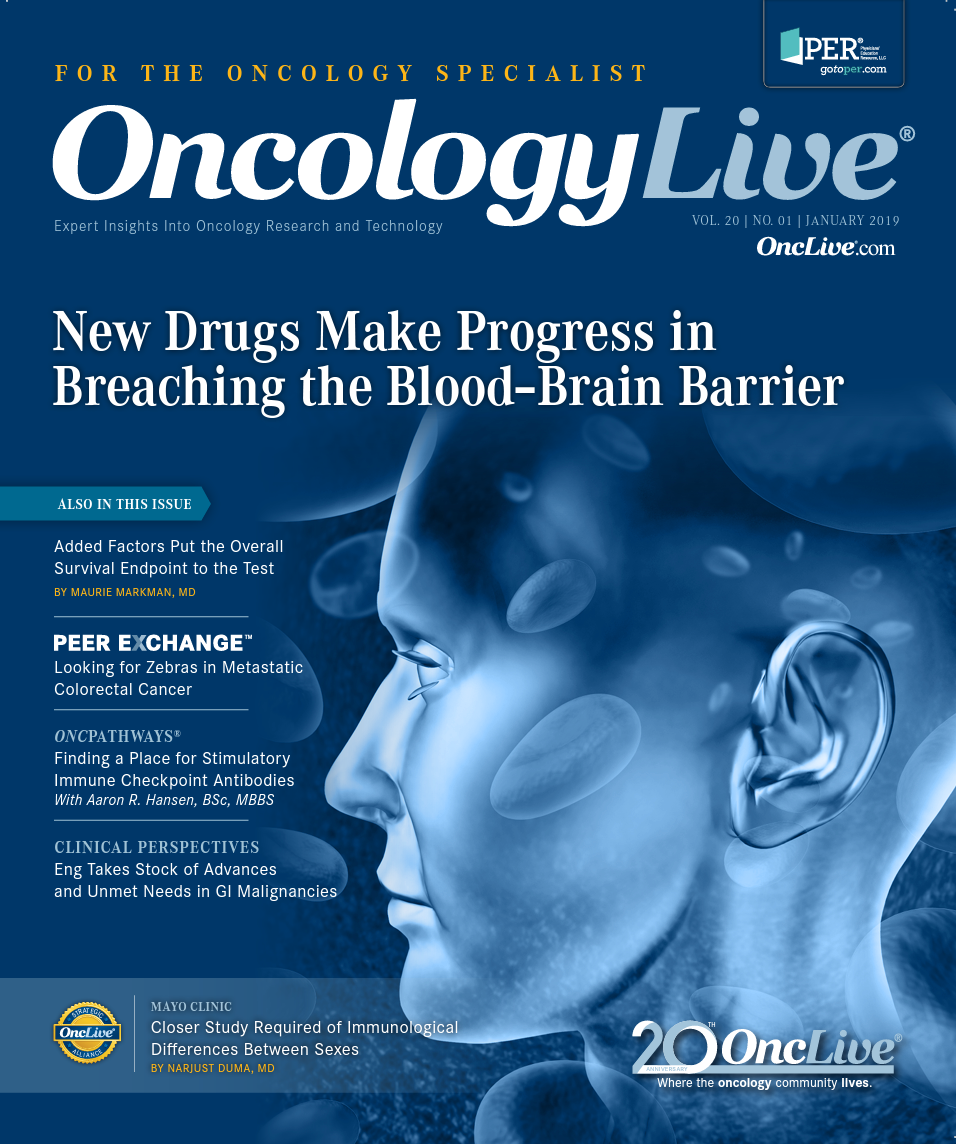Publication
Article
Closer Study Required of Immunological Differences Between Sexes
Author(s):
Study results demonstrate that men and women differ in their immunological responses to foreign and self-antigens.

Narjust Duma, MD
Hematology and oncology fellow
Mayo Clinic
Rochester, Minnesota
Study results demonstrate that men and women differ in their immunological responses to foreign and self-antigens. Women have stronger responses to vaccinations and infections than men.1 One potential cause of these immunologic differences is sex hormones: Among women, some differences in immune response are more apparent during puberty or child-bearing years. Furthermore, sex hormones might play a role in regulation of the PD-1/PD-L1 pathway, although this theory is based exclusively on data from animal studies.
Women also have exaggerated responses to auto antigens and are more likely to have autoimmune diseases.2,3 Some tumors might develop a more advanced self-editing process to defeat this “hyperactive” immune response and thrive. Women’s powerful immune activity might also affect how they respond to immune checkpoint inhibitors (ICIs).4
On this basis, Mayo Clinic investigators hypothesized that women may be at increased risk of immune-related adverse events (irAEs) with anti—PD-1/PD-L1 therapy. Mayo Clinic investigators retrospectively reviewed all patients with diagnosed metastatic non–small cell lung cancer (NSCLC) at Mayo Clinic locations in Rochester, Minnesota, and Jacksonville, Florida, from 2015 to 2018. Patients with a history of autoimmune disorders, therapy with ICIs, and treatment with oral steroids (>10 mg prednisone daily) were excluded.5
Of the 231 patients with NSCLC included in the study, 120 (52%) were women and 111 (48%) were men. Overall baseline characteristics, including prior ICI treatment, were similar between the sexes.
In our study population, women were more likely to experience irAEs compared with men (48% vs 31%; P <.008). We also observed differences in the irAEs. Women were more likely to develop pneumonitis (23% vs 12%; P <.03) and arthralgia (17% vs 3%; P <.04). However, dermatologic toxicities were more common in men (35% vs 9%; P <.002).
Aside from sex, no other clinical characteristics were associated with increased risk of irAEs. This includes histology, prior radiation, prior chemotherapy, and the presence of liver, brain, or bone metastases. In addition, there were no observed sex differences in irAEs greater than or equal to grade 3, although women were more likely to receive oral steroids as treatment for these reactions. This observation should be the starting point for further studies designed to answer the following: Are we treating women with irAEs differently? If the same rate of grade 3 irAEs exists across sexes, why are women receiving more oral steroids? This latter question is relevant because recent data show lower benefit from ICIs in patients receiving oral steroids.6
Previously, we conducted a study of women with metastatic melanoma treated with anti—PD-1/PD-L1 agents and observed similar results. Compared with men and postmenopausal women, premenopausal women had the highest rate of irAEs and higher rates of endocrinopathies, such as hypothyroidism and adrenal insufficiency. In our NSCLC cohort, we counted only 6 premenopausal women, but an analysis of this subgroup was not possible due to the small sample size.
Perhaps sex as a biologic variable plays an important role in the development of irAEs and the differences between the sexes. We believe we need additional studies to better understand the significance of our observations, but these findings call attention to a very important issue: Women are biologically different and may require closer monitoring while receiving treatment with anti—PD-1/PD-L1 therapy for NSCLC. As more trials utilizing these agents open each day, we hope that the data regarding adverse events (AEs) will be reported by sex and that larger studies will result.
With the introduction of ICIs, the treatment landscape of multiple malignancies has changed. Clinical practices should adapt to these changes. For example, the AE focus is shifting from traditional treatment symptoms, such as nausea and vomiting, to rashes, joint pain, and coughs.
In February 2018, the American Society of Clinical Oncology and the National Comprehensive Cancer Network released guidelines for the treatment of irAEs.7 We advise all physicians to review them. Consistent adherence to these guidelines will enable our patients to receive the best care, whether they are treated at tertiary centers or in community practices.
References
- Klein SL, Flanagan KL. Sex differences in immune responses. Nature Reviews Immunology. 2016;16(10):626-638. doi: 10.1038/nri.2016.90.
- Whitacre CC, Reingold SC, O'Looney PA. A gender gap in autoimmunity. Science. 1999;283(5406):1277-1278. doi: 10.1126/science.283.5406.1277.
- Cook MB, Dawsey SM, Freedman ND, et al. Sex disparities in cancer incidence by period and age. Cancer Epidemiol Biomarkers Prev. 2009;18(4):1174-1182. doi: 10.1158/1055-9965.EPI-08-1118.
- Schreiber RD, Old LJ, Smyth MJ. Cancer immunoediting: integrating immunity's roles in cancer suppression and promotion. Science. 2011;331(6024):1565-1570. doi: 10.1126/science.1203486.
- Duma N, Azzouqa AG, Yadav S, et al. Immune-related adverse events in patients with metastatic non-small cell lung cancer: sex differences and response to therapy. J Thorac Oncol. 2018;13(10):S466. doi: 10.1016/j.tho.2018.08.573.
- Arbour KC, Mezquita L, Long N, et al. Impact of baseline steroids on efficacy of programmed cell death-1 and programmed death-ligand 1 blockade in patients with non—small-cell lung cancer. Journal of Clinical Oncology. 201836(28):2872-2878. doi: 10.1200/JCO.2018.79.0006.
- Brahmer JR, Lacchetti C, Schneider BJ, et al; National Comprehensive Cancer Network. Management of Immune-Related Adverse Events in Patients Treated With Immune Checkpoint Inhibitor Therapy: American Society of Clinical Oncology Clinical Practice Guideline. J Clin Oncol. 2018;36(17):1714-1768. doi: 10.1200/JCO.2017.77.6385.









